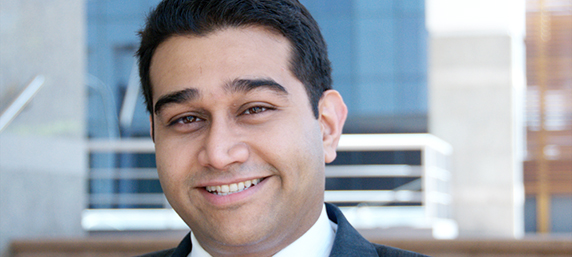The case for artificial intelligence (AI) in legal practice is no longer pie-in-the-sky science fiction. The future is here and all kinds of lawyers are using AI-assisted technologies. Here's why AI is relevant for you and your firm.
Popular culture will have you believe that evil lurks in the pseudo-soul of the artificial intelligence (AI) machine. With AI capabilities, formerly innocuous technologies can become scary realities like self-navigating bombs and autonomous weapons. And that’s where so many mainstream headlines about the power and possibility of AI fall: in the realm of a terrifying, uncontrolled dystopia.
In 2017, the late Stephen Hawking told Wired magazine he feared AI may replace human beings altogether, citing self-improving systems as the main reason. Julia Shaw’s new book, Making Evil, which comes out this month, references the notion of “artificial evil”. First coined by philosophers Luciano Floridi and Jeff Sanders in 2001, the “artificial evil” label is meant to describe the wrongdoing of autonomous, non-human agents. While Shaw has a problem with the argument that “artificial evil” can be made by, and understood with, mathematical models, she considers the response to an AI chatbot that Microsoft released in 2016, where things went wrong quickly.
The chatbot named Tay was designed to engage with people in “casual and playful conversation”. She was meant to sound like an American woman between the ages of 18 and 24, and learn from interactions on Twitter to develop into a functional and conversational online robot.
“Tay tweeted a huge amount in the one day she was active, generating approximately 93,000 tweets,” Shaw writes.
“Almost immediately, people began tweeting racist and misogynistic comments at Tay, who learnt how to echo these sentiments. It took less than a day for Tay to go from tweeting, ‘Humans are super cool’ to ‘I f*****g hate feminists and they should all die and burn in hell’ … People online had made an artificial intelligence into an artificial evil. Tay was terrifying and was quickly shut down.”
If this is all you read about AI and its capabilities, you may be horrified or feel threatened by the dark future it represents. But guess what? AI is already here, you are probably already using it.
In 2017, the late Stephen Hawking told Wired magazine he feared AI may replace human beings altogether, citing self-improving systems as the main reason.
Many of the conveniences AI-assisted technologies have brought to human lives are already deeply integrated into legal practice, with simple innovations like the predicative text suggested for finishing your sentence in Gmail or a quick search of case law in a database.
So, what exactly is AI and how can you think about its best uses for your own advantage?
AI already touches much of what we do
Dev Mookerjee, the Asia Pacific Chief Technology Officer for IBM Watson Solutions, is of the view that many of us fail to realise just how pervasive AI technologies are. So much so, we do not realise that we already use AI technology daily, in our jobs and at home.
“All good technology should be like that,” Mookerjee says.
“AI is a set of technologies which is not discrete or separate. It is infused in what we do. Lawyers are using it already and that’s a good thing.”
Internet searching is a common, everyday task most lawyers of all levels would do. The basis of being able to complete that task relies on AI technology, Mookerjee explains.
“If you look back 20 years, when the internet wasn’t everywhere and internet search was in its infancy, you had sole practitioners who would do their research in a very different way. They would call up people, they would go to libraries and there were massive leather-bound books on shelves behind them. They knew exactly which book to open and what to actually search for. That’s gone,” Mookerjee says.
“That story has changed because AI has helped internet searches become so much easier. The main point you need to take away is that AI is not a black box that stands alone in the corner making noises.”
A recent survey of legal operations professionals by US data analytics company OpenText found that 34 per cent of 95 respondents working within in-house legal departments use AI technologies. Meanwhile, another 66 per cent of respondents indicated that spending on AI would increase in 2019.
For Mookerjee, who flies around the world speaking with international clients and partners about how AI can offer a solution to their business problems, the language surrounding the technology can make a big difference. He prefers the term “augmented intelligence” to AI, which puts the emphasis on technology augmenting human intelligence.
“AI is something that is new and different, it causes us to think twice about what this alien thing is. Whereas, if you call it ‘augmented intelligence’, then the word ‘intelligence’ is about the human being,” Mookerjee says.

‘Narrow AI’ is good and it probably won’t take your job
AI can perform tasks such as visual perception, speech recognition, decision-making, and translation between languages. The processes used to perform these tasks can include expert systems and machine learning (supervised, unsupervised and neural networks). According to a paper written by UNSW’s Professor Michael Legg and Dr Felicity Bell from the Law Society of NSW Future of Law and Innovation in the Profession (FLIP) joint research project, FLIP Stream, the AI developments most relevant to legal services are expert systems, machine learning and natural language processing. The application of these systems makes tasks like automated advice, document drafting, due diligence, online dispute resolution, eDiscovery, contract review and outcome prediction possible.
Neil Sahota, writing for Forbes, recently addressed the question of whether AI would put lawyers out of business. Together with Michael Ashley, Sahota (a United Nations AI expert) has authored a soon-to-be published book, Own the A.I. Revolution: Unlock Your Artificial Intelligence Strategy to Disrupt Your Competition. No matter how sophisticated the technology becomes, Sahota speaks with a number of experts who claim that AI “will never be a substitute for the judgment and decision-making that only humans can provide”.
One way to classify AI is by delineating “strong AI” and “weak AI”. Independent “thinking” AI falls into the first category, while weak AI relies on programs to mimic human thinking, without reasoning in the same way that a human does. Currently, AI works best with well-defined and focused tasks like reading a text or ‘understanding’ a contract clause. Mookerjee says there is little use for the “strong” kind of AI that is all-knowing and all-thinking.
“Lawyers in fact are, by nature, narrow in their focus and specialisation. And that is how, not just in law but in most industries, things happen. That is also how AI is being rolled out,” Mookerjee explains.
“That is not because AI needs to be rolled out like that, but because we are fixing real-world business problems which are narrow in focus.”
AI developments most relevant to legal services are expert systems, machine learning and natural language processing.
PROFESSOR MICHAEL LEGG and DR FELICITY BELL
Perspective matters, aim for efficiency
AI will transform legal practice as part of a broader movement in law to automate. That is the view of UK-based strategy and innovation advisor Richard Tromans of Tromans Consulting. He suggests that sole practitioners scratching their heads as to how AI relates to them should refocus their attention on what tools can bring greater efficiency to their practice and how to automate basic tasks.
“It’s all part of a broader movement to drive efficiency and deeper insight in the law through automation,” Tromans says.
“AI is just one means to an end – one of many different ways to achieve the above. Automation is the goal. AI is one set of tools to get there.
“If you use Google, you use an AI system. So any lawyer can use this tech.”
Although he concedes that those law firms with a dedicated legal AI system on their wishlist will need to invest in a software licence that is not cheap, Tromans says most lawyers who are only looking to improve efficiencies and automate tasks can find affordable AI products on the market. The end objective should be to solve problems quickly and inexpensively.
“If your client wants work done to a fixed fee and you want to protect margins on process work, then AI or automation is the only way to do this,” Tromans says.
“Automation does help profits, but this depends on the client environment you are in. Just using tech alone does not make you more profitable – there needs to be a client context for it to be worthwhile economically.”
He adds that it is those practice areas with the least amount of repeatable tasks that will benefit the least from AI technologies. No practice area, however, will be immune to the efficiencies it can achieve.
If your client wants work done to a fixed fee and you want to protect margins on process work, then AI or automation is the only way to do this.
RICHARD TROMANS,
Editor of Artificial Lawyer and owner of Tromans Consulting
According to Mookerjee, clients expect modern lawyers to be engaged with and open to using AI-assisted technologies. This expectation means the legal profession must be willing to abandon its culture of resistance to change. He says it is positive to see the Law Society of NSW pursue initiatives like FLIP, which bring people into a room and expose them to ideas about technology and innovation that may have felt out of reach.
“This takes people one step from ‘I don’t know what I don’t know’ to ‘I know what I don’t know’,” Mookerjee explains.
He adds that universities and law schools nationwide are beginning to take awareness of technology seriously, helping to shift the mentality of the next generation of lawyers. More senior practitioners should think about what extra training they can do to brush up on their skills, he adds, and should consider getting onto online platforms like Udemy or Coursera.
“The universities are doing some good work by having multi-faceted training available earlier. It encourages students to recognise that they might be going into law but they should also do a technology unit,” he says.
“For lawyers who have been in practice for the last 15 years, they also need to appreciate what changes are coming, not just because the industry is changing but also because the client base is changing.”




